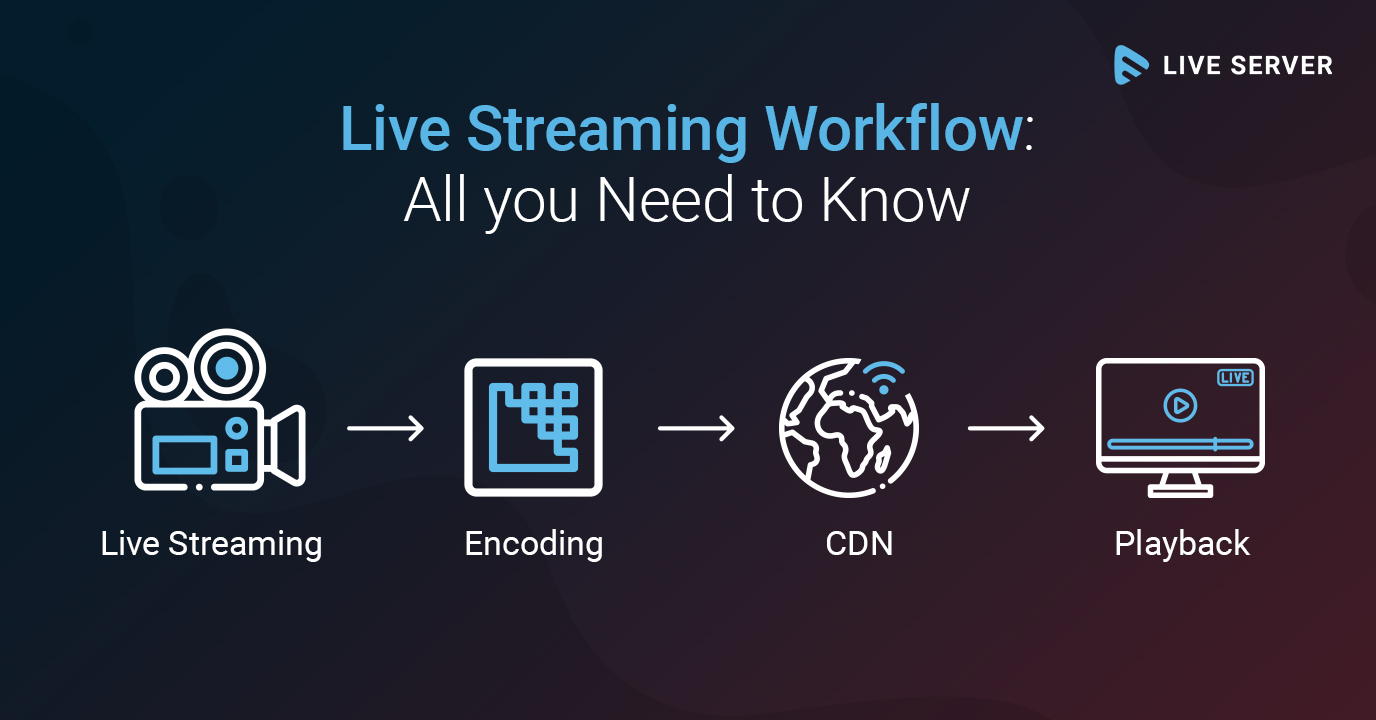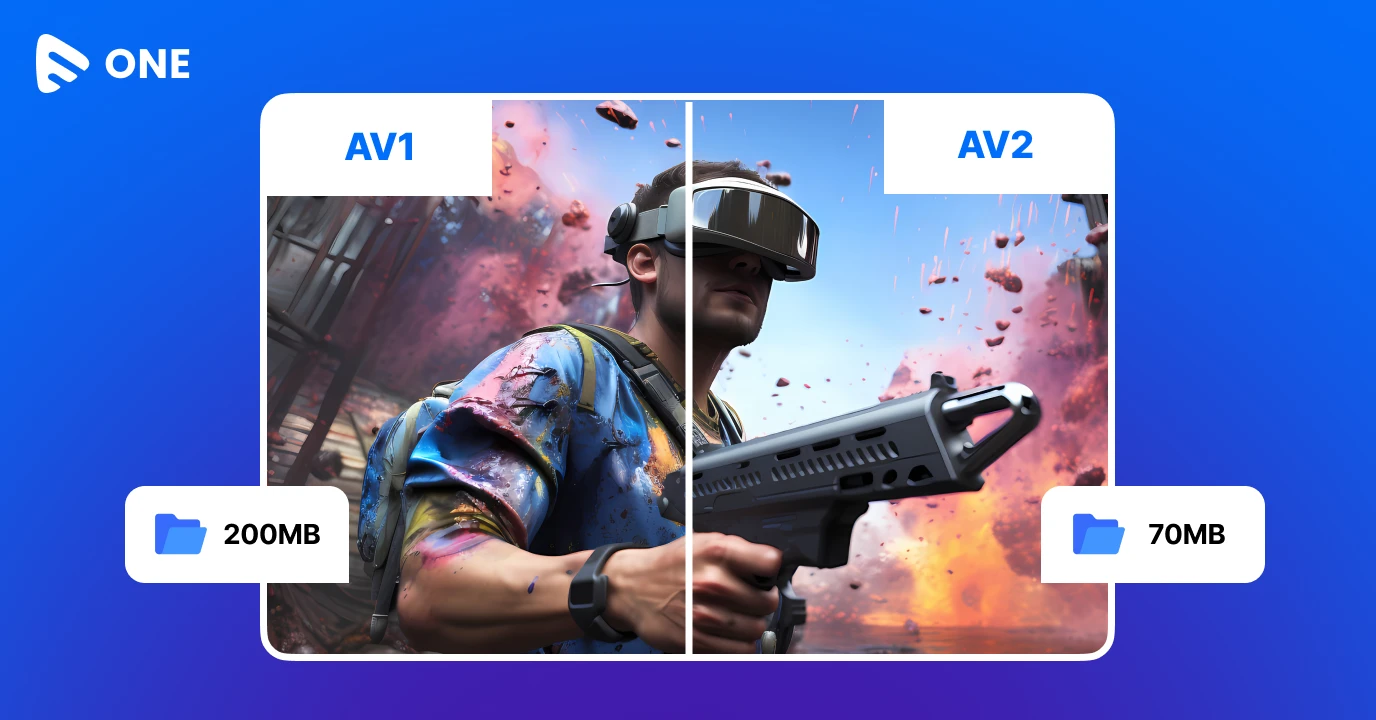Fundamentally, while live streaming, you need to take care of several things- ingest, encoding, bandwidth, and delivery for a hassle-free playback experience. Each component works differently, but in unison, to deliver a smooth live streaming experience. Read on to find out how each element is necessary to bring about a seamless live streaming workflow.
Ingest Quality
Capturing a video in good quality is the first step towards ensuring an effective live streaming workflow. Although it’s always possible for encoders to make up the missing pieces of information in a raw video feed, it’s always great to have a good quality input right at the start to smoothen up the process.
You can achieve a good quality ingest by optimizing the three elements of utmost importance for live streaming- the camera, lighting and audio. The camera need not be high end- all you need is a decent camera and a well-lighted studio and you are good to go. You can also directly live stream using an app like the Muvi Live App that allows you to instantly start streaming from your iOS and Android phones. You just have to turn on the app from your phone and effortlessly broadcast live videos right from your mobile camera and go live in seconds without OBS hassles. For that, all you need is a subscription to Muvi Live.
As far as color coding is concerned, you can always change the settings of your camera to get the desired outcome. Finally, the audio is of equal importance and you need to check your microphone time and again and reduce the background noise if you want your users to hear you loud and clear.
For details on lighting, studio requirements, and other tidbits about recording a professional live streaming event from the comfort of your home, refer to Tips & Tricks for Live Streaming to a Remote Audience.
Encoding
Getting your video feed into your platform of choice will require an encoder. Encoder and transcoder is a must for live streaming. While an encoder (both software or hardware) compresses your video file and converts your raw file into digital format, a transcoder converts the online video files into different resolutions for lower internet speed and screen sizes ensuring compatible streaming of videos without any interruption.
There are two types of encoders: a physical hardware encoder and a software encoder. A hardware encoder is a physical device that captures, compresses, and converts audio-visual data into a format suitable for streaming and/or recording. Streaming hardware encoder appliances vary greatly in their complexity, and they can be tough to use sometimes, and difficult to upgrade. For those who are just starting, hardware encoders are not one of the most affordable options.
Software encoders are programs that can be installed on your system, and they are mostly affordable. It’s suitable for beginners eager to try them out before committing too much money on a streaming setup. Easy to use, you can upgrade them by simply downloading new and improved versions. They require less time to set up, and you can tweak or change most aspects of the codecs to get the bitrate and video quality you desire. You can find more details about the encoding process in our blog Cloud Video Encoding vs On-Premise: Pros, Cons and Beyond.
Muvi Live encodes video in the cloud and supports dozens of video formats including MP4, MOV, MKV, FLV, VOB, M4V, AVI, 3GP, WMV, MPG and many more thereby streamlining encoding multi-format & multi-device content and curbing bandwidth consumption while ensuring a superior user experience.
Internet Speed
The next element in the live streaming workflow is bandwidth optimization. The encoder needs a stable internet connection with a good upload speed so that it can upload data in real-time to your live streaming platform.
Upload speed depends on video file size and bandwidth. For live streaming, the video file size depends on the quality of the content. We recommend an upload speed of 3 Mbps for a 480p video (minimum 600Kbps). If you desire a more refined quality video, you would require more upload speed like 6 Mbps for 720p (minimum 1.75 Mbps). Also, make sure you test the upload speed first- there are plenty of ways to test your download and upload speeds online. One of the most popular ones is speedtest.net.
CDN
A live streaming service uses a CDN to publish audio/video faster to users around the globe. What happens is, when a user tries to stream a video from a CDN, the edge server closest to the user attempts to deliver it because it already has the media files cached, or in case it doesn’t, it will send a request to another server that does. In this way, CDNs streamline delivery of content by sending streams from local servers, rather than sending them directly from the origin server each time. Hence, a CDN uses a large network of servers placed all around the globe to distribute content quickly.
Muvi Live is multi-CDN enabled which makes audio/video delivery with low latency possible even if one CDN fails. A multi-CDN strategy lets each CDN vendor handle what it does best, and gives the best service to broadcasters and the viewing public.
How can Muvi Live Help?
If you are looking for a stable and secure live streaming server that can scale, choose Muvi Live. Muvi Live lets you stream high-quality live video with 10 seconds latency or less. With adaptive multi-bitrate streaming, your users unlock a lag-free viewing experience that is auto-scalable during peak periods. Not only that, but Muvi Live also provides instant scalability when demand spikes unexpectedly. Its platform-agnostic nature helps deliver video on any device with support for a wide range of standard video streaming protocols.
Interested in checking out Muvi Live? Try our 14-Day Free Trial!













Add your comment